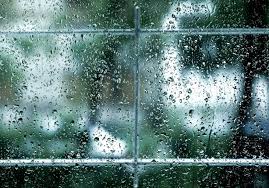 We’ve all seen those pesky little water droplets streaming down glass windows that blur your view of the outside, known as condensation.
We’ve all seen those pesky little water droplets streaming down glass windows that blur your view of the outside, known as condensation.
You want to prevent and reduce it as much as possible to avoid mold or mildew growth on your window coverings and a number of other problems caused by window condensation, such as:
- Peeling paint
- Rotting wood
- Deteriorating insulation, paneling, and window sills
Complete elimination or avoidance of moisture is nearly impossible because many day to day tasks involve some sort of moisture exposure or condensation producers, including cooking, ironing, showering etc.
3 Common Types of Window Condensation
Knowing which type of condensation is forming on your windows will help you determine how to reduce and prevent it from building-up.
Below are three common types of window condensation.
Window Condensation Type 1: Exterior
Exterior condensation is normal. It’s commonly referred to as dew, which occurs when the window is cooler (because of the cool temperature inside your home) than the temperature outside.
Window Condensation Type 2: Between the Glass Panes
It’s a bad sign if you see condensation building between the glass panes. This type of window condensation results from the seal between the glass panes being broken or the desiccant, an absorbent material designed to maintain dryness, inside the window becoming saturated.
In either scenario, you should replace the entire window or restore the ineffective glass pane because it’s faulty.
Window Condensation Type 3: Interior
Interior condensation is the most common type of condensation and forms when there’s excessive moisture in your home.
There’s no need to stress over it because are are plenty of easy fixes to eliminate and reduce most of the moisture that you accumulate in your home.
The following are three common interior condensation prevention tips:
TIP #1
Place moisture absorbing buckets, such as DampRid, in various rooms to help reduce and prevent moisture build-up on your windows.
TIP #2
Turn on your ceiling or standing fans to circulate the air and help reduce moisture accumulation on your windows.
TIP #3
Switch on the bathroom and stove vent fans when showering or cooking, but be sure they are ventilating the steam outside your home.
You can expect exterior and interior window condensation when you install high performance windows because your home will be more insulated to help better regulate the temperature.
However, that means more moisture retention in your home which is why circulation and ventilation is important to help reduce and prevent window condensation.
To learn more about preventing and reducing moisture in your home, download one of our recent guides by clicking the button below!


